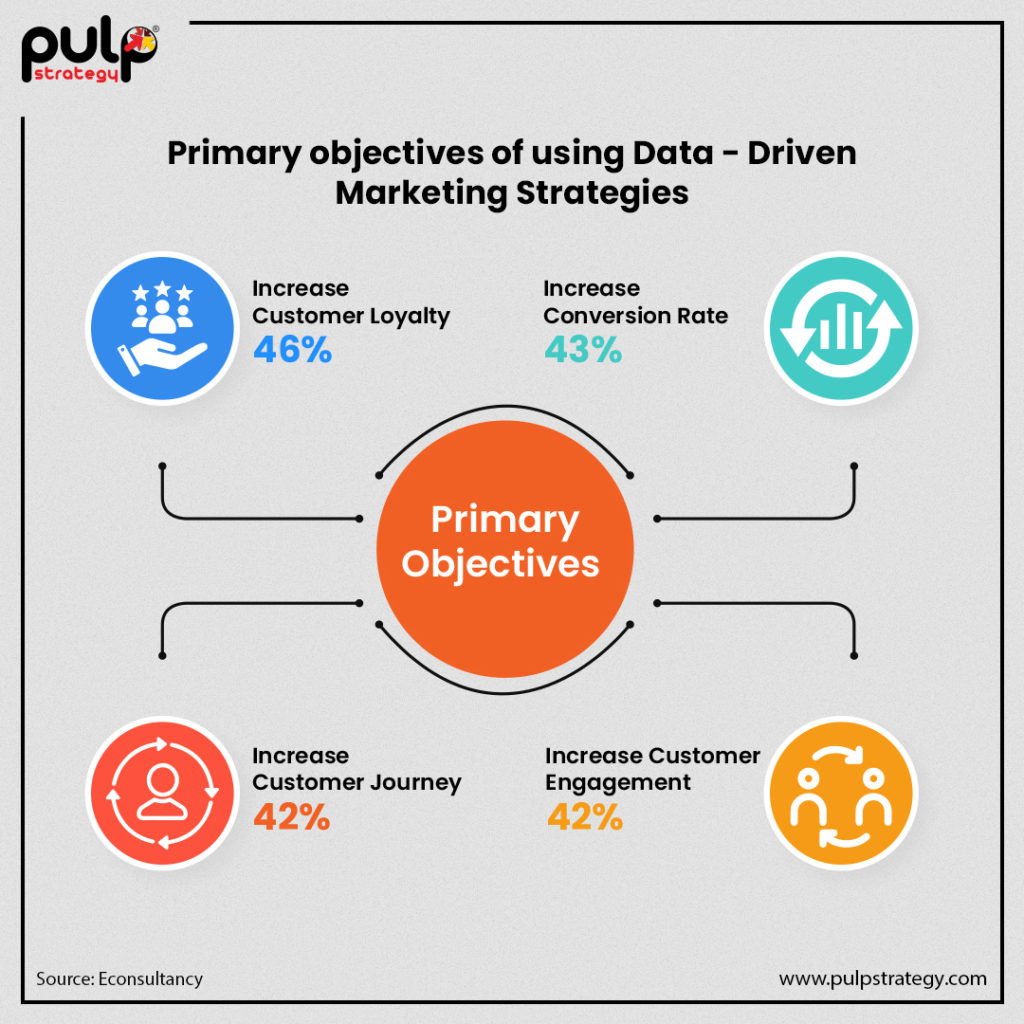A data-driven approach is the foundation of today’s marketing strategies and is key if you want to deliver the personalised experience consumers are demanding. What does it mean for your brand and how can you take advantage of it? Let's take a look.
There is no question that a data-driven approach is essential for any business looking to grow its digital footprint. By taking a data-driven approach, you can ensure that your marketing efforts are effective and efficient. Data has the authority and power to make digital marketing precise and accurate. It depends on the marketers to find the most efficient and effective ways to collect, analyse, and leverage data to gain insights that help target the right audience at the right time - eliciting the best possible outcome and response.
In today's continuously evolving digital landscape, organisations use a plethora of digital channels to reach their target audience. Today's consumers are aware, and responsible and want to invest their money in empathetic brands, understand their requirements, and deliver a customer-centric solution. For example, during the pandemic, Nike was telling its consumers to "Play inside, Play for the World." The campaign featured famous athletes asking people to remain indoors until the world’s health has recovered from the pandemic. In this blog, let us deep dive and explore how a data-driven growth strategy can fuel your marketing strategies.
Data-Driven Marketing Strategies – Why Do You Need It?
As per a report from ZoomInfo, 78% of organisations say data-driven marketing increases lead conversion and customer acquisition. A data-driven marketing approach helps in optimising brand communication on consumer information. It allows organisations to access, analyse and compare consumer information to personalise their engagement with customers, in turn resulting in increased ROI.
In the current digital ecosystem, with organisations increasing data-driven engagement, the future is hyper-personalisation. Today, consumers expect the same level of personalisation from brands as that of Netflix, which suggests a watch-list based on the recent movies and shows that you would have seen. To make this happen requires the implementation of personalisation strategies at every step of the consumer journey. The graphic below highlights the primary objectives that you can achieve from data-driven marketing strategies, based on research conducted by EConsultancy.

Data-Driven Marketing Strategies – How Do You Implement It?
One of the top driving factors for organisations investing in data-driven marketing is a demand to deliver more relevant communication and be more consumer-centric, and 53% of digital marketers believe it, as per a report from Media Math. Here are a few data-driven marketing implementations that can help you meet consumer needs within dynamic markets.
Hyper-Personalisation
Organisations that incorporate hyper-personalisation use algorithms and big data to gather critical information about their consumer's desires and needs. It allows them to target new consumers, predict their behaviour, improve precision targeting, and build strong relations by utilising implicit data (collected from data streams), explicit data (provided by the consumer), social media engagement, customer surveys, and CRM, among others. Here's how you can implement a hyper-personalisation marketing strategy -
- Personalised Ads - A consumer journey goes through various potential touchpoints for personalisation. This includes devices, interactive channels, time of the day when the consumer is active, etc. You can utilise this digital data to personalise ad content, loyalty rewards, discounts, and more, for the consumers to interact with your brand at the right time.
- Real-time Query Resolution and Support - Customer service becomes of utmost importance when you're implementing hyper-personalisation strategies. Consumers today expect a personal touch even while using live chat. Implementing relevant tools, like Haptik, can upgrade your customer experience, drive conversions, and can help in combining real-time experience and human relationships.
Predictive Data Analysis
Understanding the ever-changing trends and predicting future trends has become the need of the hour. Predictive data analysis plays a crucial role in providing the best customer experience across industries, especially the ones dealing in grocery retails and supermarkets.
The retail sector has become challenging since e-commerce giants like Amazon have entered the market. The players in this segment need predictive analytics to build targeted promotions and loyalty programs, and better optimize campaigns; predict demand so that they can suggest better replenishment strategies for their stores accordingly. With all these challenges ahead, it will be crucial not only for you to have strong customer service skills but also an understanding of how predictive analytics can change shopping patterns and help in digital data growth.
Spotify, one of the most popular cloud-based music streaming platforms in the country today, saw an increment in monthly active users during Covid-19, and currently stands at 345 million active music listeners. It utilises three machine learning (ML) recommendation models to create a unique playlist of songs that surprises its listeners. These models make automated predictions about user preferences, and understand speech and text in real-time by crawling the web. This way, users can access customised playlists as per their taste and liking, without having to search for songs manually, in turn increasing customer retention.
Data-Oriented Budget Optimisation
It is often said that under-budgeting is as much a sin as over-budgeting. According to a survey by Neilsen, one of the leading global marketing research firms, close to 200 marketing budget decision-makers at organisations having a $1 million annual budget for marketing in the United States, feel more secure about their budget decisions based on the following two data-driven principles -
- Marketing Mix Model - This model utilises performance data from the past to measure the efficiency and effectiveness of online and offline channels while also accounting for external factors to optimise marketing and spending properly.
- Multi-Touch Attribution - This model uses individual-level digital data from addressable channels to calculate and assign a fraction of the credit to marketing touchpoints along the user journey, enabling marketers to optimise in-flight campaigns based on the most accurate and latest metrics.
Empowering Businesses with AI
86% of companies accept that AI has been their ‘mainstream technology’ and that their investments are paying off in concrete ways, with benefits like revenue growth, better decision-making, and enhanced customer experiences, as per a recent survey conducted by PwC. Popular products and services like Amazon, Netflix, and of course, Google, are constantly using artificially intelligent systems in the background. Here are a few areas that you can consider while leveraging AI -
- AI-Generated Content - AI-generated content utilises data insights and style of writing based on the rules and formats that are best suited for your brand. Organizations can use natural language generation to develop email content, personalised reports, messages, or social media post content.
- AI-Enabled Ads - AI-enabled systems can help marketers test more ad platforms and optimise their targeting. Organisations can optimise their ads by using third-party or in-house AI tools where ML algorithms can find new ways for optimising your layout, copywriting, targeting, and bids.
- Churn Prediction - By modifying churn ML algorithms according to your brand requirements, you can create effective content for disengaged users that are about to churn. AI can help you create a predictive model that indicates the stage churning person is in, providing you time to incentivise the user to stay connected with your brand.
To conclude, digital marketers must pull off a balancing act while connecting with their customers on multiple stages, ensuring transparency while using the data provided by the customers and maintaining compliance with the existing privacy laws and the ones appearing on the horizon. These marketing strategies will help you add PERSONALITY to your brand so that it is not lost in the constantly evolving marketing landscape.





